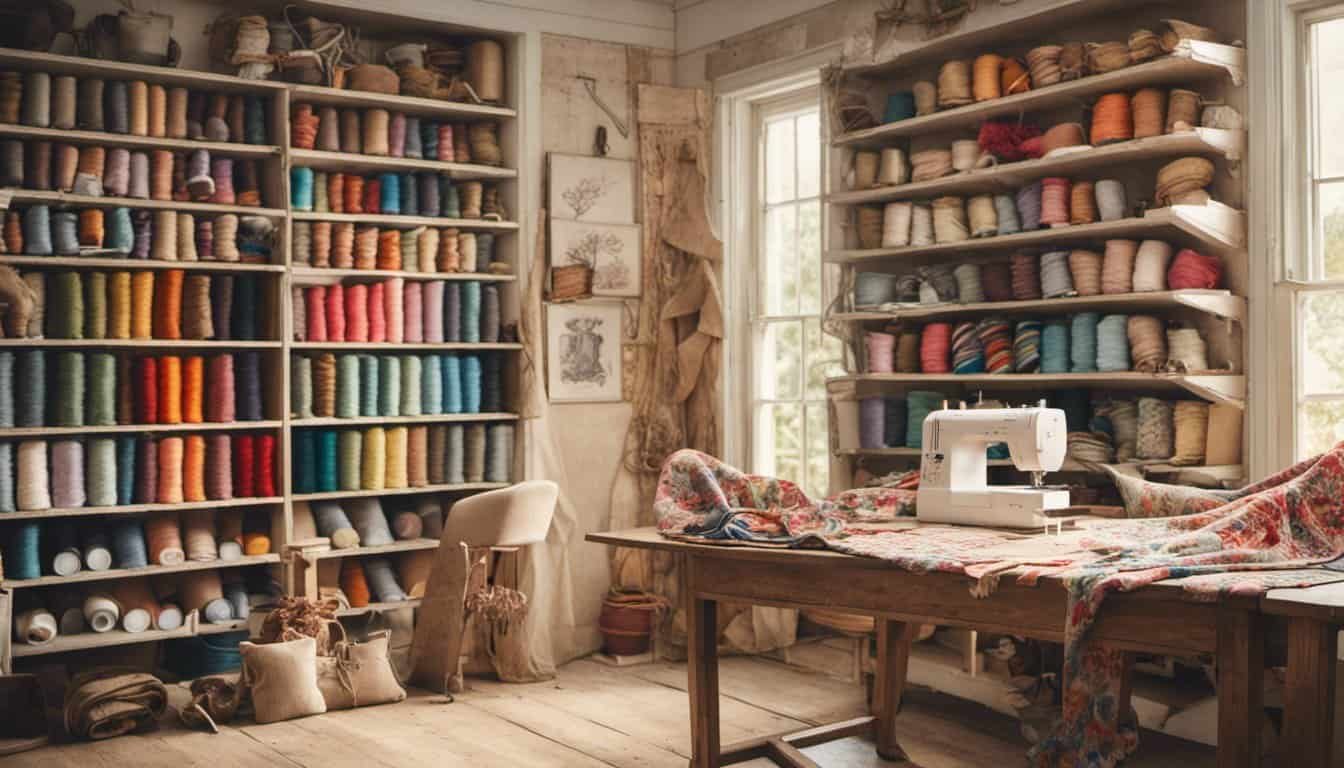Ever felt stuck on a sewing project? You’re not alone. Even the most seasoned sewers hit snags now and then. Thankfully, veteran sewers have amassed a treasure trove of tips that can make your sewing experience smoother and more enjoyable.
Imagine breezing through fabric cuts and seams with ease. By embracing these tried-and-true strategies, you’ll elevate your skills and boost your confidence. Whether you’re a beginner or looking to refine your technique, these insights are just what you need to take your sewing to the next level.
Get ready to transform your sewing journey with advice straight from those who’ve mastered the craft. It’s time to sew smarter and create pieces you’ll be proud of.
Essential Sewing Tools
Equipping yourself with the right tools enhances your sewing projects. Quality tools contribute to precision and efficiency in your work.
Must-Have Equipment
- Sewing Machine: A reliable machine ensures smooth stitching, provided it has essential features like multiple stitch options.
- Fabric Scissors: Sharp scissors deliver clean cuts, offering precise shaping for your fabrics.
- Measuring Tools: Accurate measurements are critical, requiring tools like a steel measuring tape and a clear ruler.
- Pins and Pin Cushion: Sufficient pins secure fabric layers effectively, keeping your design intact during assembly.
- Needles and Thread: Variety in needles and thread types accommodates different fabrics, maintaining strong and neat seams.
Organizing Your Workspace
Maintaining an organized workspace streamlines your sewing process. An orderly environment reduces errors and saves time.
- Storage Solutions: Effective storage categorizes your tools, so you can locate scissors, threads, and notions quickly.
- Lighting: Adequate lighting enhances visibility, minimizing strain and ensuring accurate work.
- Work Surface: A spacious, flat surface allows for easy cutting and assembling, facilitating uninterrupted workflow.
- Tool Accessibility: Keeping frequently used tools within reach accelerates your sewing, maintaining momentum.
Mastering Sewing Techniques
Enhancing your sewing skills takes practice and the right techniques. Implement these expert tips to refine your craft and achieve professional results.
Perfecting Your Stitches
Consistent stitches ensure durable and neat projects. Use the following strategies to perfect your stitching:
- Maintain Tension: Adjust your machine’s tension settings to match your fabric type, preventing puckering or loose threads.
- Choose the Right Needle: Select needles based on fabric weight. For example, use a universal needle for medium-weight fabrics and a ballpoint needle for knit materials.
- Practice Seam Types: Master basic seams like straight, zigzag, and French seams. Experiment on scrap fabric to build confidence.
- Even Stitch Length: Set your machine to a uniform stitch length, typically between 2.0 and 2.5, for balanced seams.
- Guide Your Fabric: Let the machine feed the fabric naturally without pulling or pushing, ensuring straight lines.
Fabric Cutting Tips
- Use Sharp Scissors: Invest in high-quality fabric scissors and keep them dedicated to cutting fabric to maintain sharpness.
- Pre-Wash Fabric: Wash and iron fabric before cutting to prevent shrinkage and distortions after sewing.
- Stable Cutting Surface: Lay fabric on a flat, smooth surface. Use a cutting mat for added stability and protection.
- Pinning Techniques: Secure patterns with pins placed perpendicular to the cutting line, avoiding distortion of the fabric.
- Trace Patterns Carefully: Use tracing paper or chalk to mark pattern lines accurately, ensuring pieces match perfectly during assembly.
Advanced Sewing Strategies
Mastering advanced sewing strategies can elevate your projects to professional levels. Implement these techniques to handle intricate tasks with ease.
Working with Complex Fabrics
- Selecting the Right Needle
Use a ballistic needle for denim, a sharp needle for woven fabrics, and a stretch needle for knits to ensure clean stitches and prevent fabric damage.
- Adjusting Machine Tension
Lower the tension for delicate fabrics like silk and higher for sturdy materials such as canvas to maintain stitch quality.
- Utilizing Stabilizers
Apply tear-away or stay-stitch stabilizers when working with chiffon or lace to enhance fabric support and prevent distortion.
- Employing Specialized Tools
Incorporate a walking foot for multiple layers, rotary cutters for precise cutting, and seam rollers for hard-to-reach areas to streamline your workflow.
Customizing Patterns
- Modifying Measurements
Add or subtract inches from pattern measurements to achieve a better fit, ensuring garments complement your body shape accurately.
- Incorporating Design Elements
Add pockets, embellishments, or decorative seams to personalize your creations and enhance their functionality and style.

- Combining Pattern Pieces
Merge elements from different patterns to create unique designs, allowing for greater creativity and customization in your projects.
- Altering Fit and Style
Adjust neckline shapes, sleeve lengths, and hem lines to match your personal taste and comfort, ensuring each piece reflects your unique style.
Troubleshooting Common Issues
Even experienced sewers encounter challenges. Addressing these common problems enhances your sewing projects.
Solving Stitch Problems
Skipped stitches, bobbling, and uneven tension can disrupt your work. Follow these steps to fix them:
- Check the Needle: Replace dull or bent needles. Use the correct needle type for your fabric.
- Re-thread the Machine: Ensure the thread passes through all guides and the tension discs. Double-check the bobbin installation.
- Adjust Tension Settings: Lower tension for loose threads and increase for tight ones. Test on scrap fabric.
- Clean the Machine: Remove lint and debris from the feed dogs and under the needle plate. Use a brush or vacuum.
- Use Quality Thread: Opt for strong, consistent thread to prevent bunching and tangling.
Machine Maintenance Tips
- Clean After Each Use: Brush away lint and dust. Wipe the exterior with a soft cloth.
- Oil the Machine: Apply manufacturer-recommended oil to moving parts. Follow the manual’s guidelines.
- Replace Worn Parts: Change needles after every project. Inspect and replace belts and other components as needed.
- Cover When Not in Use: Protect your machine from dust and spills with a fitted cover.
- Store Properly: Keep the machine in a dry, stable environment. Avoid extreme temperatures and humidity.
Creative Inspiration
Unlock your creativity with strategies that keep your sewing projects fresh and exciting. Explore diverse sources and maintain your enthusiasm throughout each endeavor.
Finding New Project Ideas
- Browse Sewing Blogs and Websites
« How Quilting Became an American Tradition: The Surprising History You Must Read
How to Celebrate National Sewing Month: 15 Fun Projects You Can’t Miss »
Explore popular sewing platforms like Sewing.org and Craftsy for the latest trends and patterns.
- Join Online Sewing Communities
Participate in forums such as Reddit’s r/sewing or Facebook groups to share ideas and gain inspiration.
- Attend Workshops and Classes
Enroll in local or virtual sewing classes to learn new techniques and discover project ideas.
- Flip Through Magazines
Check magazines like Threads and Missouri Star Quilt Review for creative project features and tutorials.
- Use Social Media Platforms
Follow hashtags like #SewingProjects and accounts of veteran sewers on Instagram and Pinterest to see diverse creations.

Staying Motivated
- Set Clear Goals
Define specific, achievable objectives for each project to maintain focus and direction.
- Create a Vision Board
Compile images and ideas that inspire you, keeping your creative goals visible and attainable.
- Schedule Regular Sewing Sessions
Allocate dedicated time slots each week to work on your projects consistently.
- Celebrate Milestones
Acknowledge and reward yourself for completing project stages to boost morale and motivation.
- Mix Up Projects
Vary the types of projects you undertake, such as switching from garments to home decor, to keep the process exciting.

Conclusion
With these seasoned tips at your fingertips you’re well on your way to mastering your sewing projects. Embrace the journey and don’t be afraid to experiment as you grow your skills. Every stitch brings you closer to creating something unique and personal. Keep your workspace organized and your tools ready so inspiration can strike anytime. Stay connected with the sewing community and celebrate your milestones big and small. Happy sewing!

















